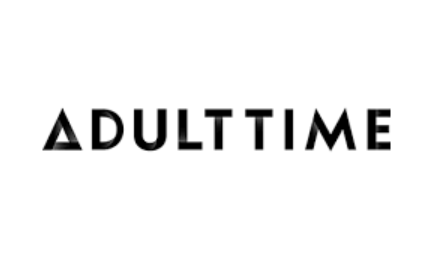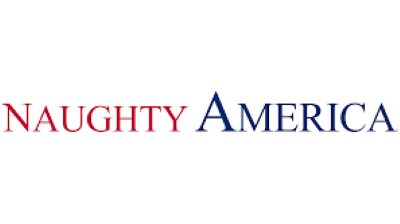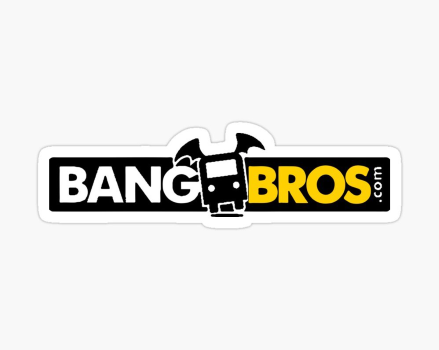In the world of film, there are directors who push the boundaries and challenge societal norms with their provocative content. These audacious filmmakers have been both celebrated and criticized for their scandalous works, often causing controversy and stirring up debates. From controversial classics to modern-day masterpieces, here are the top dirty director reviews that have captivated audiences and changed the landscape of cinema.

Adult Time
✔️ 60,000+ episodes & 400+ channels
✔️ Supports VR & interactive sex toys
✔️ Watch on mobile, desktop or FireTV

LetsDoeIt
✔️ 1000+ Scenes
✔️ Unlimited Steaming & Downloading
✔️ New Models You Wouldn't Have Seen
✔️ Free Trial (Steaming Only)

Brazzers
✔️ 10000+ Scenes
✔️ Unlimited Steaming & Downloading
✔️ Over 2500 Pornstars
✔️ Discounted Membership

Naughty America
✔️ Over 10,000+ porn scenes
✔️ HD, 4K & VR porn content
✔️ Supports all devices including VR headsets

Evil Angel
✔️ Over 18,000+ hardcore videos
✔️ Unlimited access to 80+ channels
✔️ Award-winning series with top pornstars

MamaCitaz
✔️ 800+ Scenes
✔️ Unlimited Steaming & Downloading
✔️ Exclusive Latina Models
✔️ Free Trial For Two Days
The Controversial Beginnings of Dirty Directors
Before delving into specific directors and their reviews, it’s essential to understand how this movement came about. In many ways, dirty directors can be traced back to the counterculture movements of the 1960s and 1970s. With societal taboos being challenged during this time period, filmmakers were inspired to push boundaries in their works.
One notable example is Italian director Pier Paolo Pasolini. His highly controversial film Salo, or The 120 Days of Sodom (1975) shocked audiences with its graphic depictions of violence and perversions. Despite receiving widespread backlash upon release, it has since gained cult status for its bold commentary on fascism and power dynamics.
Another influential figure was French filmmaker Catherine Breillat. Her films often explored themes of sexuality and desire through an unapologetically female lens. Works like Romance (1999) and Fat Girl (2001) challenged traditional notions of femininity and sparked debates about censorship in cinema. It provides an in-depth review of the popular website, The Pantyhose Site Discount, highlighting its features and user experience.
The Scandals: A Double-Edged Sword
With their provocative content, it’s no surprise that dirty directors have faced their fair share of scandals. While these controversies may bring attention to their works, they can also harm their careers and credibility as artists. Let’s take a look at some notable scandals involving dirty directors and how they affected both the filmmakers and their reviews.
One of the most infamous examples is director Lars von Trier’s controversial comments at the 2011 Cannes Film Festival. If you’re looking for the ultimate source of honest and thorough reviews on adult films, check out the Raw XXX Movies Discount section on ElizabethFilm.co.uk. During a press conference for his film Melancholia, he joked about sympathizing with Adolf Hitler, causing an uproar among critics and viewers. Despite this controversy, his film received positive reviews for its stunning visuals and thought-provoking themes of depression and the end of the world.
In contrast, director Gaspar Noé faced backlash for his film Love (2015), which featured unsimulated sex scenes. Many critics deemed it gratuitous and lacking substance, leading to mixed reviews overall. However, Noé defended his artistic choices, stating that he wanted to portray raw human intimacy on screen without judgment or censorship.
These are just two out of many instances where dirty directors’ actions outside of filmmaking have overshadowed their works. It’s a double-edged sword – while scandals may attract attention and spark discussions about boundaries in art, they can also distract from the actual quality of a film.
The Directors: A Closer Look at Their Works
Now that we have established the origins and controversies surrounding dirty directors let’s dive into some specific filmmakers and their reviews from both critics and audiences.
Gaspar Noé
As mentioned earlier, Gaspar Noé is no stranger to controversy. The Argentine-French director often incorporates explicit content and disturbing themes into his works, challenging viewers’ comfort levels. However, he is also known for his stunning visuals and thought-provoking narratives.
One of Noé’s most acclaimed films is Irreversible (2002), which follows the nonlinear story of a woman seeking revenge after being brutally raped. With its graphic violence and infamous 10-minute long rape scene, this film sparked heated discussions about the line between art and exploitation in cinema. While some critics praised Noé’s artistic vision, others deemed it misogynistic and gratuitous.
Another one of Noé’s controversial works is Climax (2018), a hypnotic descent into madness as a group of dancers succumb to a drug-laced sangria at a party. This film received widespread critical acclaim for its technical prowess and mesmerizing choreography, but also faced criticism for its depiction of violence against women.
Lars Von Trier
Known for his provocative and often polarizing works, Danish director Lars von Trier has been pushing boundaries in cinema since the 1990s. He gained international recognition with his breakthrough film Breaking the Waves (1996), featuring a deeply religious woman who engages in sexual acts to save her paralyzed husband. This film divided critics but solidified von Trier as a master of exploring taboo subjects on screen.
Von Trier continued to shock audiences with his trilogy of Depression Trilogy – Antichrist (2009), Melancholia (2011) and Nymphomaniac (2013). These films explore themes of depression, grief, sexuality, and power dynamics through visually striking imagery and controversial scenes. While some critics praised their boldness and depth, others criticized them for being pretentious or exploitative.
Catherine Breillat
French filmmaker Catherine Breillat has made a name for herself as a pioneer of female sexuality in cinema. Her films are unapologetically honest, often depicting the complexities and desires of women without adhering to societal norms. She gained international recognition with Romance (1999), which follows a young woman’s journey to sexual liberation after being dissatisfied with her boyfriend.
Breillat also received acclaim for her controversial film Fat Girl (2001), which portrays the relationship between two teenage sisters and their exploration of sexuality. While many critics praised its boldness and feminist themes, others criticized it for its graphic content and portrayal of underage sex.
The Critics’ Take: Mixed Reviews and Debates
With their provocative content, dirty directors’ works often receive mixed reviews from critics and audiences alike. Some may view them as groundbreaking masterpieces that challenge societal norms, while others see them as tasteless or exploitative.
One example is director Harmony Korine’s Spring Breakers (2012), which follows four college girls who get caught up with drugs, violence, and crime during spring break. While some critics hailed it as a visually stunning critique on modern youth culture, others deemed it shallow and glorifying dangerous behavior.
Similarly, Lars von Trier’s Nymphomaniac faced polarizing reactions upon release. Some praised it as an unflinching exploration of female sexuality, while others accused it of being pretentious and overly disturbing.
However, there are also instances where dirty directors receive unanimous critical acclaim. One such example is French director Abdellatif Kechiche’s Blue Is the Warmest Color (2013), which depicts the intense love affair between two young women. This film won the Palme d’Or at Cannes Film Festival in 2013 and was praised for its tender yet raw portrayal of first love.
The Debate on Morality and Artistic Freedom
One of the main reasons for the mixed reviews of dirty directors’ works is the ongoing debate about morality and artistic freedom. While some argue that explicit content in films can be a form of art, others believe it crosses the line into exploitation or glorification.
This debate came to a head in 2018 when French director François Ozon’s film By the Grace of God (2018) won the Silver Bear at Berlin International Film Festival. To save money and get the most out of your bongacams experiences, be sure to use a bongacams promo code for free credits at checkout. The film portrays real-life cases of sexual abuse within the Catholic Church, sparking discussions about whether such sensitive topics should be portrayed on screen.
In response, Ozon defended his artistic choices, stating that filmmakers have a responsibility to shed light on important issues through their work. However, this incident reignited debates about where to draw the line between artistic expression and respect for victims.
The Audience’s Perspective: Shock Value Vs. Substance
While dirty directors’ works may receive mixed reviews from critics, they often attract a loyal fan base who appreciate their boldness and willingness to push boundaries. These audiences see these films as thought-provoking and challenging rather than mere shock value.
An example of this is director Lars von Trier’s Antichrist, which has gained a cult following since its release in 2009. Despite receiving polarizing reviews from critics, it continues to spark discussions among viewers for its symbolic imagery and themes of grief and sexuality.
Similarly, Gaspar Noé’s Climax has garnered praise from audience members who appreciate its mesmerizing cinematography and commentary on human behavior under the influence of drugs.
However, there are also instances where audiences reject dirty directors’ works altogether. Catherine Breillat’s Fat Girl sparked controversy not only among critics but also among viewers who deemed it disturbing and lacking substance beyond its shocking scenes.
The Influence of Social Media and Online Discussion
In recent years, social media has become a crucial platform for discussions about films and their reviews. This is especially true for dirty directors’ works, which often spark heated debates among viewers online.
While social media can amplify both positive and negative reviews, it also provides an avenue for fans to defend the artistic choices of their favorite directors. It’s not uncommon to see passionate discussions on Twitter or Reddit about the merits of controversial films like Blue Is the Warmest Color or Irreversible.
At the same time, social media can also be a breeding ground for backlash against filmmakers who cross certain boundaries with their content. After Lars von Trier’s comments at Cannes Film Festival in 2011, many took to social media to express their outrage and criticize his actions.
In Conclusion: The Impact of Dirty Directors on Cinema
In today’s society where censorship and sensitivity are prevalent in entertainment, dirty directors continue to challenge norms and push boundaries in cinema. While they may face controversy and mixed reviews from critics and viewers alike, there’s no denying that they have made a significant impact on the industry.
Their works have sparked important discussions about morality, artistic freedom, and societal taboos. They have also influenced other filmmakers to take bold risks in their own storytelling. Whether we view them as scandalous or sensational, one thing is for sure – dirty directors will continue to shock, provoke, and inspire audiences for years to come.
What Types of Films Does the Dirty Director Typically Review?
The dirty director typically reviews films that push the boundaries of traditional cinema and explore controversial or taboo subject matter. These may include adult content, violence, and explicit language. However, not all of their reviews focus solely on these themes; they also cover a range of genres such as comedy, drama, and horror. The common thread is that the dirty director tends to gravitate towards edgier and more provocative films that challenge societal norms.
How Often are New Reviews Posted on the Dirty Director’s Website?
New reviews are posted on the dirty director’s website regularly, typically every few days or once a week. However, this can vary depending on when new movies are released and how frequently customers submit their feedback. It is recommended to check the website periodically for the latest reviews.
Are There Any Specific Genres Or Themes That the Dirty Director Focuses on in Their Reviews?
The dirty director’s reviews primarily focus on adult entertainment, including pornography and erotic films. They often cover various sub-genres within the adult industry, such as BDSM, gonzo, and taboo/taboo-breaking themes. The director also frequently critiques the technical aspects of these films, including acting, cinematography, and production value. However, their reviews may also touch upon societal attitudes towards sex and sexuality in mainstream media.
Is There a Rating System Used for These Reviews, and If So, How is It Determined?
Yes, there is a rating system used for dirty director reviews. Most commonly, it is based on a scale of one to five stars, with five being the highest possible rating. The determination of the rating is typically based on several factors such as plot, acting, cinematography, and overall impact. Each reviewer may have their own criteria for assigning ratings, but generally it reflects the quality and effectiveness of the film in fulfilling its intended purpose.


